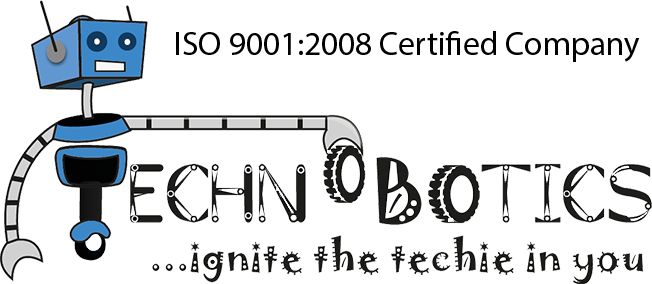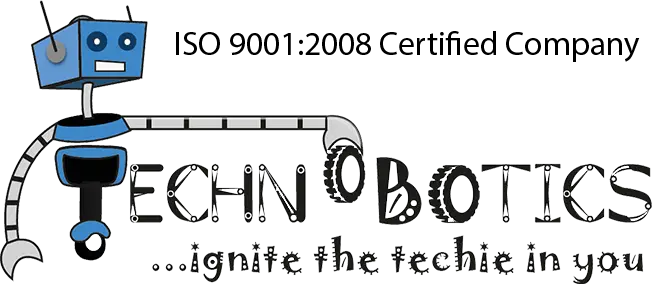Imagine a classroom where learning isn’t just memorizing facts, building robots that clean your room, or designing video games that teach math! That’s the power of STEM education. STEM robotics curriculum stands for Science, Technology, Engineering, and Math, and it’s all about approaching these subjects in a hands-on, collaborative way.
Instead of separate classes, STEM combines them. This lets you see how science explains why things work, how technology helps us build them, how engineering puts them into action, and how math makes it all precise. It’s like having a secret decoder ring to unlock the world around you
STEM education isn’t just about fancy gadgets. It teaches critical thinking, problem-solving, and creativity. It teaches you to ask questions, experiment, and find solutions—skills that are valuable in any future career path you choose. So, the next time you see a cool invention or a mind-blowing scientific discovery, remember—that might be the result of a curious mind nurtured by a STEM education!
What is STEM Education?
Have you ever wondered how your phone works, why bridges don’t crumble, or how cool video game graphics come to life? The answer lies in STEM education! STEM stands for Science, Technology, Engineering, and Mathematics, and it’s all about fostering creativity and problem-solving skills through these exciting fields.
But STEM education is much more than just memorizing facts. It’s about:
Asking Curious Questions: Have you ever wondered why the sky is blue or how a seed turns into a plant? STEM education encourages children to ask questions and delve deeper to find answers.
Building Things: From designing a mini-city using recycled materials to constructing a miniature bridge that can hold weight, STEM activities get kids’ hands dirty and minds racing.
Working Together: Many STEM projects involve teamwork and teaching valuable collaboration and communication skills.
Experimenting and Failing: Science is all about trial and error! STEM education creates a safe space for kids to experiment, learn from their mistakes, and become more resilient.
Making Connections: The beauty of STEM is that it doesn’t exist in silos. Math skills are used in engineering design, technology brings science concepts to life, and scientific discoveries fuel technological innovation.
Here are just a few exciting areas explored within STEM
Robotics: Kids can build and program robots, learning about mechanics, electronics, and coding.
Coding: Coding allows kids to understand the language that powers technology, from creating simple animations to building interactive games.
Space Exploration: Learning about planets, stars, and space travel ignites a passion for science and inspires future astronauts and engineers.
Environmental Science: Understanding ecosystems, climate change, and sustainable solutions empowers children to become responsible stewards of the environment.
Biomedical Engineering: This field combines engineering principles with biology to develop life-saving technologies like prosthetics and medical devices.
The importance of STEM robotics curriculum:
Imagine a world where solving problems feels like a fun adventure, where technology becomes a tool for creation, and where understanding the universe unlocks a door to endless possibilities. That’s the power of STEM education – a dynamic approach to learning that blends Science, Technology, Engineering, and Mathematics into a captivating experience.
But why is STEM such a big deal? Here’s the lowdown:
• Future-Proofing Your Skills: The world is rapidly changing, and STEM fields are at the forefront of this transformation. From artificial intelligence to renewable energy, STEM knowledge equips students with the skills needed to thrive in this dynamic job market.
• Beyond Textbooks: Hands-on Learning: Forget rote memorization! STEM education encourages exploration and discovery. Students build robots, design bridges, and conduct experiments, learning by doing. This hands-on approach fosters a love for learning that goes beyond textbooks and classrooms.
• Problem-Solving Superpowers: The world throws curveballs, and STEM education prepares students to be resourceful problem-solvers. Through projects and challenges, students learn critical thinking, collaboration, and creativity – skills that are valuable in any field.
• Unlocking Innovation: STEM education ignites curiosity and encourages students to ask “why” and how. This fosters a culture of innovation, where students aren’t just consumers of technology, but creators who can use their knowledge to solve real-world problems.
• Building a STEM Literate Society: In today’s world, understanding basic scientific principles and technological advancements is no longer a luxury, it’s a necessity. STEM education empowers individuals to make informed decisions about the world around them, from understanding the impact of climate change to evaluating the safety of new technologies.
Think of STEM education as a bridge connecting classroom knowledge to real-world applications. It’s about nurturing a generation of critical thinkers, innovators, and problem-solvers who can tackle the challenges of tomorrow.
Here’s a bonus: STEM education isn’t just for students in lab coats! It can be integrated into any subject, from history to art. Imagine using engineering principles to design a miniature castle or applying math concepts to create a dazzling light show. The possibilities are endless!
So, next time you hear about STEM education, remember – it’s not just about science and math. It’s about empowering future generations to build a brighter future, one project, one innovative solution at a time.
Benefits of STEM Courses:
Imagine turning ideas into inventions, solving problems with robots, or designing the coolest video game ever. That’s the power of STEM (Science, Technology, Engineering, and Math) courses! These classes aren’t just about memorizing facts – they’re about sparking curiosity, fostering creativity, and equipping you with skills for the future. From building problem-solving muscles to mastering teamwork, STEM can benefit you in surprising ways, no matter your life path. So, why not explore the exciting world of STEM and see what amazing things you can create?
Conclusion
STEM (Science, Technology, Engineering, and Mathematics) isn’t just a collection of subjects; it’s the driving force behind innovation and progress in the 21st century. Understanding scientific principles fuels technological advancements, which engineers translate into practical solutions. Mathematics provides the foundation for all of it, ensuring accuracy and efficiency.
A strong STEM robotics curriculum education equips individuals with critical thinking, problem-solving, and analytical skills – essential for navigating our increasingly complex world. It fosters creativity and the ability to collaborate, preparing graduates for the high-demand jobs of tomorrow. STEM holds the key to a brighter future, from tackling climate change to developing sustainable energy sources. However, the emphasis shouldn’t be on creating the next generation of scientists and engineers. STEM literacy, the ability to understand and apply these concepts, empowers everyone to make informed decisions and participate in a world shaped by technology.


